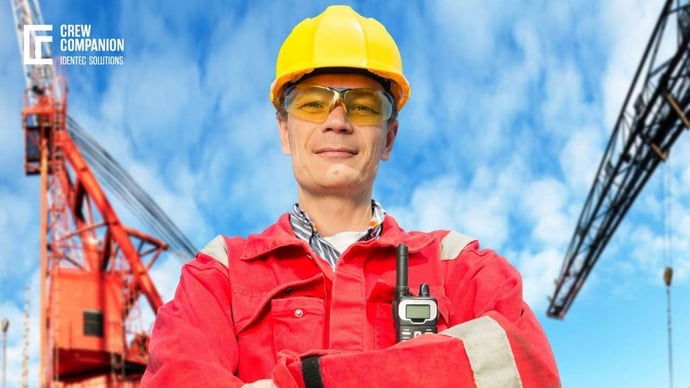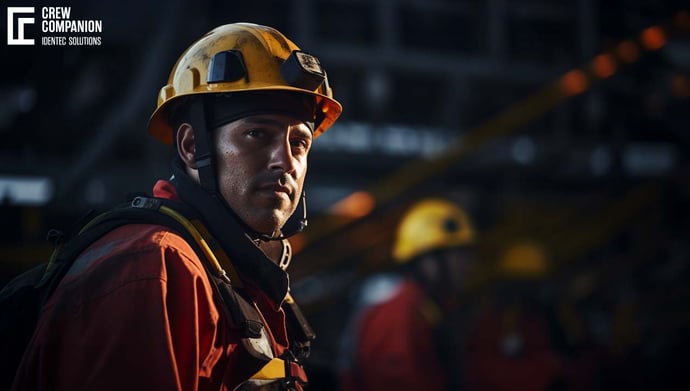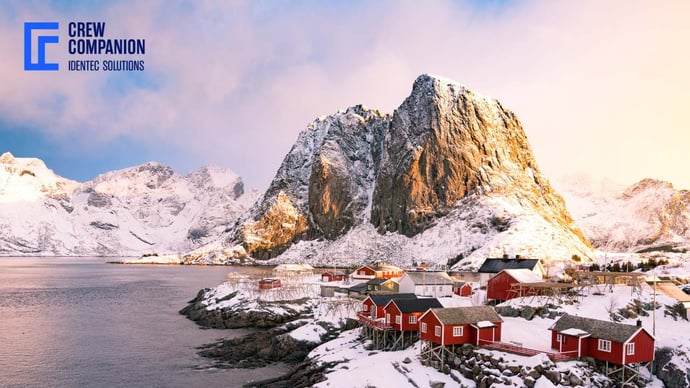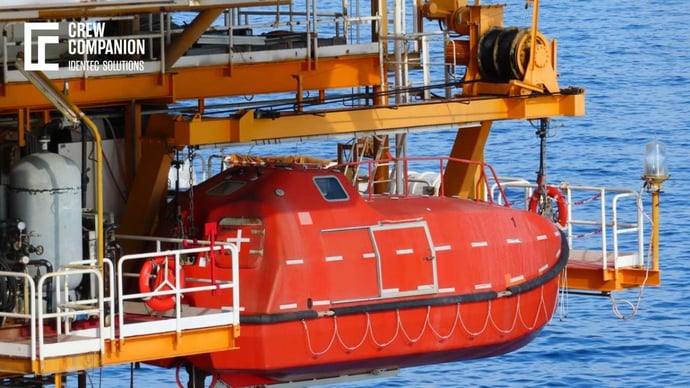Oil rig safety - what was learned from the Deepwater Horizon disaster
| Written by David Gordon

No video selected
Select a video type in the sidebar.
Deepwater Horizon was an ultra-deepwater, semi-submersible offshore drilling rig owned by Transocean. On April 20, 2010, while drilling at the Macondo Prospect in the Gulf of Mexico, a blowout of methane gas caused a detonation on the platform that killed 11 crew members and ignited a fireball. An attempt to activate the blowout preventer failed as the blind shear ram to plug the well. The fire was out of control, and two days later, on April 22, the Deepwater Horizon sank, leaving the well open at the seabed. The resultant oil spill persisted until July 15, when it was closed by a cap. The US authorities established the Gulf Spill Restoration project to restore much of the coastline.
Built in 2001 in South Korea, the rig was commissioned by R&B Falcon (later: Transocean) and leased to BP from 2001 until 2013. In September 2009, the platform drilled the deepest oil well in history at a vertical depth of 10,683 m in the Tiber Oil Field at Keathley Canyon in 1,259 m of water.
Interested in better evacuation procedures? Learn more about how to improve your emergency response training!
Why is Preparedness Crucial for Ensuring oil Rig Safety?
Safety is paramount in the unpredictable and often harsh environment of offshore oil rigs. Oil and gas operations involve numerous hazards, making it essential for companies to prioritize safety measures. One critical aspect of maintaining a safe working environment is preparedness.
Preparedness plays a pivotal role in mitigating risks and ensuring the safety of personnel working on oil rigs. Offshore oil and gas operations are subject to a wide range of hazards, including fires, blowouts, gas leaks, severe weather conditions, and machinery malfunctions. The ability to anticipate and respond promptly to such emergencies is crucial. By having comprehensive preparedness plans in place, companies can significantly reduce the impact of these incidents, protect human lives, and safeguard the environment.
What to Prepare for:
- Emergency Response: Oil rig emergencies can occur at any time, demanding swift and decisive action. Workers must be prepared to handle situations such as fires, explosions, or equipment failures. This requires thorough training in emergency response protocols, including evacuation procedures, first aid, and fire suppression techniques. Regular drills and simulations should be conducted to ensure workers are prepared to respond effectively under high-pressure situations.
- Extreme Weather Conditions: Offshore oil rigs are susceptible to severe weather events, including hurricanes, storms, and high winds. Adequate preparedness for extreme weather conditions involves monitoring weather forecasts, establishing clear communication channels, securing loose equipment, and implementing evacuation plans when necessary. Regular maintenance and inspection of rig structures are vital to prevent weather-related incidents.
- Hazardous Materials: Oil rigs house numerous hazardous materials, including flammable substances, toxic chemicals, and pressurized gases. Proper storage, handling, and disposal of these materials are crucial to prevent accidents and environmental contamination. Rig personnel must be well-versed in safety protocols and trained to respond effectively to spills, leaks, or other potential incidents involving hazardous materials.
- Medical Emergencies: Health emergencies can occur on offshore oil rigs, ranging from minor injuries to life-threatening situations. Rig personnel should receive training in basic first aid, CPR, and the use of automated external defibrillators (AEDs). On-site medical facilities equipped with essential medical supplies and equipment are essential. Establishing protocols for emergency medical evacuation and maintaining communication with medical professionals onshore are also crucial.
How to Prepare:
- Robust Training Programs: Comprehensive training programs are essential to equip workers with the necessary skills and knowledge to respond effectively in emergencies. These programs should cover a wide range of scenarios and be tailored to specific job roles. Regular refresher courses and practical exercises, such as fire drills and mock evacuations, should be conducted to reinforce preparedness skills.
- Emergency Response Plans: Developing and regularly updating emergency response plans is crucial for oil rig safety. These plans should outline specific protocols for different emergencies, including evacuation routes, communication procedures, and designated assembly points. Rig personnel must be familiar with these plans and know how to access them easily. Conducting tabletop exercises to simulate emergency scenarios can help identify any gaps in the plans and fine-tune response strategies.
- Adequate Safety Equipment and Systems: Oil rig safety relies heavily on the availability and proper functioning of safety equipment and systems. Regular inspections and maintenance of fire suppression systems, gas detection systems, life-saving appliances, and personal protective equipment (PPE) are essential. Rig operators should invest in advanced safety technologies, such as automatic shutdown systems, remote monitoring, and leak detection systems, to enhance preparedness and minimize risks.
- Effective Communication Channels: Clear and reliable communication channels are critical during emergencies. Rig personnel must have access to communication systems that can operate in adverse weather conditions and have redundancy measures in place. Regular drills should be conducted to test communication systems and ensure seamless coordination between different teams, including the rig crew, onshore support, and emergency responders.
Well, this is the theory. Let's go back to the Deepwater Horizon accident.
oil rig safety at the deepwater horizon
Evacuations under such circumstances are dramatic and highly challenging. The explosions and the following fire happened when many crew members were asleep or in their cabins. There were 126 people on board the Deepwater Horizon on April 20, 2010, including the crew, the BP well site team, third-party contractors, and visitors from both Transocean and BP shore-based management. The first explosion happened at 9:49 pm and triggered the general alarm and announcement directing personnel to muster in the galley and cinema. Some of the alarm-signalling devices have been damaged by the explosions.
One of the first emergency responses was to gather the emergency command group on the bridge or proceed to other muster stations regarding their emergency role (e.g. fire-fighting stations). Once it became evident that the galley and cinema were no longer safe, the bridge instructed personnel to muster at the forward lifeboat stations. Due to the blast damage to parts of the rig, some muster points became not accessible, like one complete lifeboat station. The crew has been instructed on the location of their muster points and designated lifeboats when they first arrived on board the rig and underwent induction and orientation. In addition, the crew held weekly emergency response drills to familiarise themselves with the mustering process.
Learn more how to improve your offshore emergency response with this whitepaper...
The training proved valuable as the emergency mustering was conducted under challenging conditions; they included the loss of the central power system and primary lighting, slippery surfaces (caused by the sprayed drilling mud), blocked escape routes due to damage, thunderous noise, fires, extreme heat and flying debris. Due to the intense heat from the fires and damage caused by the explosions, search and rescue operations were limited in some platform areas. Some crew members were injured and could not evacuate without assistance.
Under the stress of the emergency, a few persons onboard evacuated independently rather than per procedure and as trained. The designated muster checkers checked off personnel names against their designated lifeboats but had to make several attempts to verify and check off the muster before personnel left the rig. Finally, at 10:28p pm, the captain gave the word to abandon the platform. One hundred people evacuated in the forward lifeboats, seven evacuated in one of the life rafts, and eight jumped from the forward end of the rig into the sea and were picked up by a speedboat from the Bankston.
Further reading: Offshore safety equipment

What are Potential pitfalls For oil rig Safety?
Based on the aftermath investigation of the sinking of Deepwater Horizon, several weaknesses of the rig safety processes were discovered, despite regular inspections in compliance with SOLAS and USCG requirements, citing an "outstanding safety culture" on board:
- Mustering activities began before the muster checkers arrived on the scene and created contradicting muster information.
- A full muster was not completed until all survivors were safely on board the Bankston, the assigned support vessel.
- Not all survivors evacuated in their designated lifeboats, and it has not been possible to establish how many people were in each of the two lifeboats.
- Four people jumped in panic before the launch of the lifeboats. However, the benign weather conditions contributed to the survival of those in the water.
- Search and rescue operations were limited due to the fire, heat, and missing staff's unknown whereabouts.
However, despite these obstacles, muster, evacuation plans, and training facilitated the evacuation of all 115 survivors to the supply vessel nearby. The assistance from the crew of the Bankston was a critical part of the emergency response management. The 17 most seriously injured survivors were airlifted to hospitals for treatment.
CHANGE FOR THE BETTER
The Deepwater Horizon disaster reminded mankind of the complex issues and difficulties in offshore oil rig operations. From this tragedy came one important lesson to be learned: the need for an all-encompassing approach toward safety beyond that which was done to comply with regulations. That means the importance of a proactive risk management culture in which continuous improvements in safety protocols will be fostered. It became very clear that having solid emergency response plans and exercising them regularly is not enough when they are disconnected from the rest of a more holistic safety culture focused on hazard identification and mitigation at all levels of operations. A reliable communication system and training in emergency procedures adapted to the specific conditions of each rig thus emerged as two pillars of critical importance in the face of emergencies. Moreover, it exposed many deficiencies in the way the industry handled its operations involving sophisticated, high-risk undertakings—the efficiency of blowout preventers, especially critical safety equipment. The fallouts occasioned a review of the regulatory regime over offshore drilling activities and a new emphasis on safety oversight, developing more rigorous standards, and implementing sophisticated technologies to nip such incidents in the bud. Essentially, it is the Deepwater Horizon disaster that has become the catalyst of sweeping changes across the oil and gas industry to drive the point across that safety would be the constant preoccupation deeply embedded in operational practice and culture within every organization with activities associated with offshore drilling.
FAQs
What training should offshore rig workers receive to enhance their preparedness for emergencies?
Offshore rig workers should receive comprehensive training that covers a range of emergency scenarios. This training should include emergency response protocols, evacuation procedures, first aid and CPR, fire suppression techniques, and the use of safety equipment. Regular drills and practical exercises should be conducted to reinforce preparedness skills and ensure workers are prepared to respond effectively during emergencies.
What are the essential components of an effective emergency response plan for offshore oil rigs?
An effective emergency response plan for offshore oil rigs should include clear protocols for different emergency scenarios, such as fires, explosions, equipment failures, or extreme weather conditions. The plan should outline evacuation routes, designated assembly points, communication procedures, and roles and responsibilities of different personnel. Regular updates and tabletop exercises should be conducted to ensure the plan remains current and to identify any areas that may require improvement.
How can offshore oil rig operators enhance communication during emergencies?
Offshore oil rig operators can enhance communication during emergencies by implementing reliable and robust communication systems. These systems should be able to operate in adverse weather conditions and have redundancy measures in place to ensure uninterrupted communication. Regular testing and drills should be conducted to verify the effectiveness of these systems. Additionally, having clear communication protocols and designated points of contact between the rig crew, onshore support, and emergency responders is essential for seamless coordination during emergencies.
Takeaway
Preparedness is the cornerstone of maintaining a safe working environment on offshore oil rigs. By anticipating potential emergencies and implementing effective preparedness measures, companies can safeguard the lives of their workers, protect the environment, and minimize operational downtime. Robust training programs, well-defined emergency response plans, adequate safety equipment, and reliable communication systems are vital components of an effective preparedness strategy. It is only through comprehensive preparedness that oil rig operators can confidently navigate the challenging offshore environment, knowing they are well-equipped to respond to any emergency that may arise.
In the fast-paced world of offshore oil and gas operations, being prepared can mean the difference between a minor incident and a catastrophic event (learn more about electronic mustering). By prioritizing preparedness, companies demonstrate their commitment to their workers' safety and well-being while safeguarding their operations and the environment.
Dive deeper into one of our core topics: Emergency Response Management
Glossary
The Tiber Oil Field - is a deepwater offshore oil field in Keathley Canyon Block 102 of the U.S. Gulf of Mexico. Discovered in September 2009, it is operated by BP. The field, located in waters between 1,300 and 5,000 feet deep, is considered a "giant" find, with an estimated 4 to 6 billion barrels of oil in place. However, BP states that it is too early to confirm the exact size, as a "huge" field typically holds at least 250 million barrels.
Drilling required a 35,056-foot (10,685-meter) deep well beneath 4,130 feet (1,260 meters) of water, making it one of the deepest wells ever drilled at the time. The discovery highlights the technological advancements in deepwater exploration, demonstrating BP’s ability to access significant reserves in challenging environments. The Tiber Oil Field represents a major resource in the Gulf of Mexico’s offshore energy sector. (4)
Sources:
(1) https://www.deepwater.com/documents/MacondoDocs/10_TRANSOCEAN_Ch_3-6.pdf (10.2.2022)
(2) https://www.epa.gov/enforcement/deepwater-horizon-bp-gulf-mexico-oil-spill
(3) https://oceanservice.noaa.gov/education/tutorial-coastal/oil-spills/os04-sub-01.h
(4) https://en.wikipedia.org/wiki/Tiber_Oil_Field
Note: This article has been updated on the 6th of March 2025
Related Articles
Related Product






